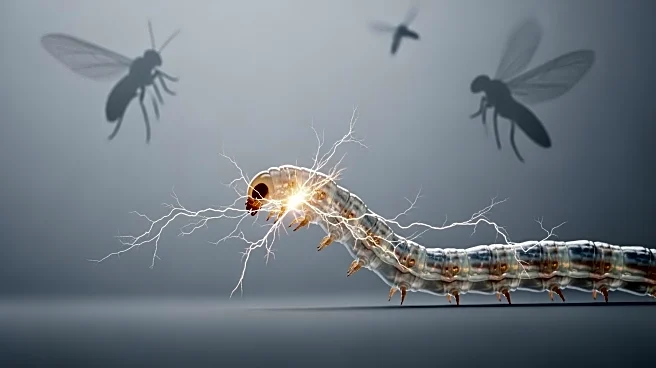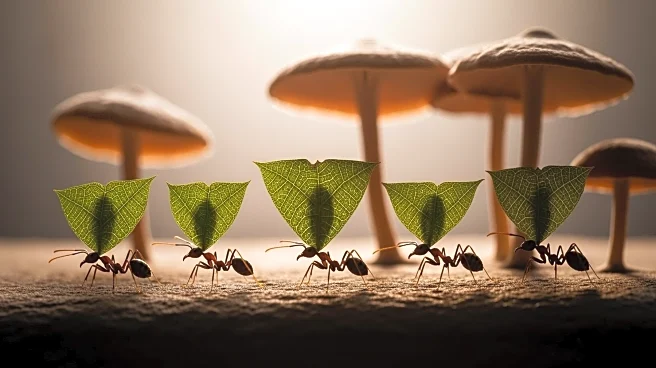What's Happening?
Researchers have discovered that the parasitic nematode Steinernema carpocapsae uses static electricity to latch onto flying insects. The study, conducted by scientists from Emory University and the University of California, Berkeley, reveals that the worm
can jump up to 25 times its body length and connect with insects using electrostatic induction. The insect's wings generate an electric field, inducing an opposite charge in the worm, which attracts them together. This mechanism is crucial for the worm's survival, as it allows it to infect insects with symbiotic bacteria.
Why It's Important?
The findings highlight the role of electrostatic forces in the survival strategies of small organisms, offering insights into ecological interactions and pest control methods. Understanding the worm's adaptive mechanism could lead to advancements in biological pest control, reducing reliance on chemical pesticides. The research also contributes to the emerging field of electrostatic ecology, exploring how static electricity influences the behavior and evolution of various species. This knowledge could have broader implications for agriculture and environmental management.
Beyond the Headlines
The study underscores the complexity of ecological systems and the innovative strategies employed by organisms to thrive. It raises questions about the potential applications of electrostatic forces in other areas, such as robotics and material science. Additionally, the research highlights the importance of interdisciplinary approaches, combining physics and biology to uncover new scientific insights.















